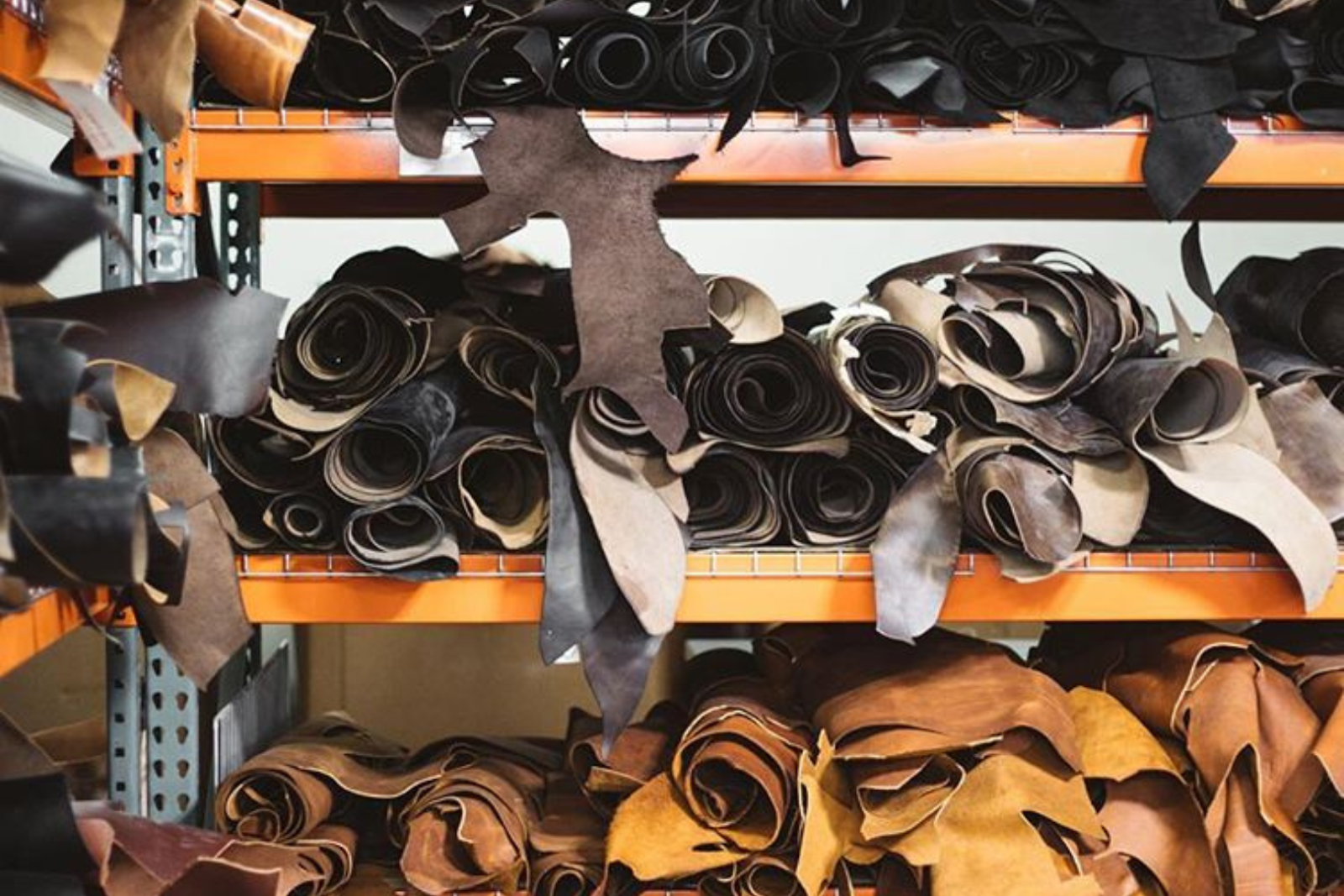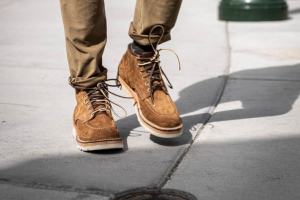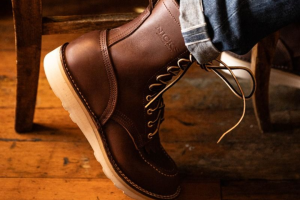The Tool Belt Buying Guide: How to Choose Quality Every Time

With so many options available, how can you choose the best tool belt for your needs? You’re in luck: whether you’re a professional tradesman, a DIY enthusiast, or just someone who needs a tool belt for occasional use, this guide will help you make an informed decision.
We’ll cover the different types of tool belts, materials, capacity, comfort, pockets, fasteners, and price, as well as how to choose the best tool belt for your needs. We’ll also compare Nicks Framer’s Tool Belt to other brands, and explore why it might be the right choice for you.
Curious about who we are? Check out our welcome page to know more about us or see our history. You can also skip ahead and browse our belt collection or best-selling boots!
What Is A Tool Belt?
A tool belt is a type of belt worn by workers, often on a construction site, to carry tools and supplies. It’s often made of a durable material like leather on canvas and may come with pockets, loops, and holders. It’s also comfortable and secure, allowing the worker to easily move without worrying about their tools falling out.
It’s designed to be worn around the waist, with the belt buckle in the center of the back. It’s also often adjustable to fit most sizes and can even be worn over the shoulder, allowing the user to carry more tools and supplies at once.
You can carry items like hammers, wrenches, screwdrivers, pliers, nails, screws, and other small tools on a tool belt. You can also store safety equipment like hard hats, safety glasses, and gloves there.
How Does It Work?
Tool belts like Nicks Framer’s Tool Belt work by being durable enough to carry your tools. Nicks Framer's Tool Belt is a high-quality tool belt designed specifically for framers, carpenters, and other construction professionals. It features durable materials and pockets and compartments for easy organization and access.
Designed and handcrafted in-house and constructed with only the highest quality U.S.-tanned leather, Nicks Framer’s Tool Belt is a heavy-duty 12 to 14 oz veg-tanned leather meant to provide the ultimate support. Its bags are 7 to 8 oz full-grain leather, similar to our most durable work boots.
History Of Tool Belts
Tool belts date back to the early days of civilization. The first tool belts were made of leather, and used by ancient Egyptians to carry tools and weapons. As civilization progressed, tool belts evolved and were used by many different cultures and professions.
In the Middle Ages, tool belts were used by blacksmiths and other artisans to carry tools and materials. The tool belt was also used by soldiers to carry weapons and other equipment. During the Renaissance, tool belts were used by sailors and traders to carry tools and supplies.
In the 19th century, tool belts were used by miners, carpenters, and other laborers to carry tools and equipment. The tool belt became an important part of the worker’s uniform. It was also used by farmers to carry farm tools and supplies.
In the 20th century, tool belts were used by electricians, plumbers, and other tradesmen. The tool belt was an important part of the tradesman’s uniform and was designed to hold tools and materials securely.
Today, tool belts are used by a variety of professionals, including carpenters, electricians, plumbers, and other tradesmen. Tool belts are also used by DIYers and hobbyists to carry tools and supplies.
Benefits Of A High-Quality Tool Belt
A high-quality tool belt is an invaluable asset for any tradesperson, craftsman, or DIY enthusiast. Here are some of the key benefits of investing in a quality tool belt:
- Comfort and Ergonomics: A quality tool belt is comfortable to wear and supports your lower back and hips. It should also distribute the weight of the tools evenly across your body to reduce fatigue and strain.
- Organization: A good tool belt should have plenty of compartments to organize your tools. This will help you quickly locate the right tool for the job and keep your tools safe and secure.
- Durability: Quality tool belts are made from strong materials, such as leather and canvas, which are designed to withstand the rigors of hard work. This means that your tool belt will last for years, even with frequent use.
- Versatility: A quality tool belt will have a range of pockets and compartments that can be used to carry a variety of tools. This means you can use the same belt for a variety of different jobs without buying multiple belts.
- Safety: A quality tool belt will help to keep your tools secure and prevent them from falling out. This will reduce the risk of injury from falling tools, and will also help to protect your tools from damage.
How Do You Choose the Best Tool Belt?
When choosing the best tool belt for your needs, consider the following:
Capacity
The capacity of a tool belt is determined by the size of the pockets and the number of pockets available. Small tool belts are best suited for light-duty work, medium tool belts are best for general DIY projects, and large tool belts are best for heavy-duty work.
Think about the type of tools you will be carrying, the type of material the tool belt is made of, the type of fastener used to secure the pockets, and the price and value of the tool belt.
Higher-quality tool belts are more expensive, but they’re more durable and provide better protection for your tools. Low-cost tool belts may be cheaper upfront, but they may not last as long or provide as much protection as higher-quality models.
Material
Leather is a popular choice for many tool belts. It’s durable, stylish, and easy to clean and maintain. Second to that, canvas is a great material for tool belts. It’s lightweight, breathable, durable, and relatively inexpensive.
Nylon is also a nice option for tool belts. It’s lightweight, strong, water-resistant, and easy to clean and maintain. Alternatively, synthetic fabrics such as polyester and polyurethane are also popular choices for tool belts. They offer the same benefits as nylon.


Comfort And Weight
The best tool belts are lightweight and comfortable to wear for long periods, so they should be made of a breathable material like canvas or leather and paired with padding or cushioning to provide extra comfort. They should also have pockets or compartments designed to keep tools organized and easily accessible.
Pocket Type
The most common type of pocket is the single pocket, which is made from leather or heavy-duty fabric and is ideal for carrying tools. The next type of pocket is the multi-pocket, which is designed to carry a variety of tools and accessories. The last type of pocket is the specialized pocket, which is designed to carry specific tools
Whichever you choose, make sure the pockets are well-made and designed to last, large enough to fit the tools you need to carry, and easy to access and secure.
Fastener Type
The most common type is a belt buckle, which is made of metal and adjustable. Hook-and-loop closures are made of fabric and are easier to adjust than a belt buckle. Meanwhile, snaps are made of metal and are designed to hold the belt in place, and quick-release buckles are designed to be quickly adjusted and released.
Consider the type of work you’ll do and the type of environment you’ll be working in. Likewise, think about the weight of the tools you’ll carry and make sure the fastener is adjustable so you can loosen or tighten the belt as needed.
Price And Value
Generally, the more features you get with the belt, the higher the cost, but if you're looking for a basic belt to get the job done, you can find one at a lower price.
Then again, you should still consider the lifetime value of the product if you want to use the belt for a long time. Moreover, consider the value of the features you get with the tool belt. If the belt has extra pockets or other features that you won't use, it may not be worth the extra cost, but if they will make your job easier, it may be worth the extra cost.
Nicks Boots Tool Belts vs. Other Tool Belts
Nicks Framer’s Tool Belt is handcrafted with expertise and the highest quality materials designed to last for years. It features full-grain leather, which is durable and will stand up to the toughest work environments. It also gives you a canvas made with a heavy-duty, water-resistant material and metal hardware that can stand up to the wear and tear of any job site.
More than this, Nicks Framer’s Tool Belt has widely adjustable straps, easy-access pockets, and easy-to-use buckles. All of our creations speak for themselves over the years, lasting for ages and guaranteeing excellent performance.
We can’t actually speak for other tool belts themselves, but we understand the frustration of randomly purchasing a tool belt and having it malfunction on us! Before we created our own belts, we actually suffered through quite a lot of lower-quality belts, which influenced our decision to create our belt collection.
Check out our collection of belts and see for yourself, or get yourself a Nicks Framer’s Tool Belt today!
Make Your Life Easier With Nick Boots Tool Belt!
Want to make life and tasks easier for you? Get yourself a Nicks Framer’s Tool Belt! We can’t stress enough how we use only the finest materials for your needs, and we even handcraft them with expertise!
Why suffer when you can experience unparalleled comfort and excellent functionality? You can even pair your framer’s tool belt with Nicks Tool Tote while you’re at it!


Nicks Framer's Tool Belt
Nicks Framer's Tool Belt is a high-quality tool belt designed specifically for framers, carpenters, and other construction professionals. It is made with heavy-duty, durable materials and features a number of pockets and compartments for easy organization and access.
It’s also adjustable, so it can fit a variety of body sizes. The main pocket is large enough to fit larger tools and has a number of smaller pockets and compartments for smaller tools. The tool belt is also water-resistant, so it can withstand the elements and won't be damaged by rain or snow.
Final Thoughts
When buying a tool belt, it’s important to make sure you’re getting the best quality product for your needs. A quality tool belt can make a huge difference in your ability to work efficiently and safely. Consider the factors outlined in this guide and make sure you’re getting the best tool belt for your needs.
And if you’d like to enjoy using a tool belt, try Nicks Boots Framer’s Tool Belt! You can also check our other leather accessories or contact us for inquiries.
Want to learn some interesting leather-related things? Check these out:
FAQs
What should you carry in your tool belt?
The answer depends on the type of work you do. If you’re a carpenter, you’ll likely need a hammer, screwdrivers, nails, and a saw. Electricians, on the other hand, will need wire cutters, voltmeters, and other electrical tools. Plumbers may need a pipe wrench, a plunger, and other plumbing tools.
Should a tool belt be on the front or back?
The best way to wear a tool belt depends on the type of work you’re doing. If you’re working in tight spaces, it’s best to wear it on the back, as this will give you more freedom of movement. If you’re doing more general work, wearing it on the front can help you reach tools more easily.
How can I make my tool belt more comfortable?
Making your tool belt more comfortable depends on the type of tool belt you have. If it’s a leather tool belt, make sure it fits properly and is well-oiled to prevent chafing. If it’s a canvas tool belt, make sure it’s not too tight and that it has adjustable straps. Additionally, you can add extra padding to make it more comfortable to wear.
How do you put a tool belt on a harness?
Putting a tool belt on a harness depends on the type of harness you have. If it’s a full-body harness, you’ll need to attach the tool belt to the D-rings on the front of the harness. If it’s a sit harness, you’ll need to attach the tool belt to the loops at the back of the harness.
Who uses tool belts?
Tool belts are used by a variety of different people, including carpenters, electricians, plumbers, and other tradespeople. They are also used by handymen, DIYers, and hobbyists.
Are tool belts bad for your back?
Tool belts can be bad for your back if they are too heavy or not worn properly. To avoid back strain, choose a tool belt that is lightweight and fits properly. Additionally, make sure to use good posture when carrying your tool belt.
How do you take care of a leather tool belt?
Leather tool belts require regular maintenance to keep them in good condition. To clean a leather tool belt, use a damp cloth and mild soap. Avoid using harsh chemicals, as these can damage the leather. To keep the leather from drying out, use a leather conditioner every few months.




